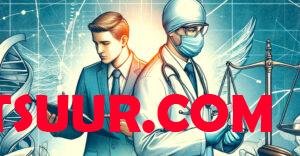
Introduction In the judicial process of accident cases, bias and prejudice can be subtle yet significant barriers to justice. This article explores the challenges posed by these biases and offers strategies for overcoming them, ensuring fairness and equity in legal proceedings.
Understanding Bias in Accident Cases Bias in accident cases can stem from various sources – stereotypes, media portrayals, and even subconscious prejudices. These biases can affect the judgment of jurors, the approach of legal professionals, and the perceptions of witnesses, potentially skewing the course of justice.
The Impact on Victims and Defendants Bias can have a profound impact on both victims and defendants in accident cases. It can lead to unfair assumptions about responsibility, the severity of injuries, and the credibility of those involved. Overcoming these biases is crucial to ensure that all parties receive a fair trial.
Educating Legal Professionals One of the first steps in combating bias is through the education of legal professionals. Lawyers, judges, and jurors must be aware of their own potential biases and understand how these can influence their decisions and actions.
Voir Dire: A Tool for Fairness Voir dire, the jury selection process, plays a crucial role in mitigating bias. It allows attorneys to identify and challenge potential jurors who may have biases that could affect their judgment.
Expert Testimony Expert testimony can be pivotal in dispelling myths and biases, especially regarding the nature of injuries and accident dynamics. Experts can provide objective insights that counteract prejudiced perceptions.
Diverse Representation Diverse representation in legal teams and juries can help counteract biases. A mix of perspectives and backgrounds can lead to more balanced and fair deliberations and outcomes.
Empathy and Understanding Fostering empathy and understanding is vital. Attorneys can humanize their clients through storytelling, helping to break down stereotypes and encourage jurors to see beyond their biases.
Media and Public Perception Media representations of accident cases often influence public perception, which can seep into the courtroom. Legal teams must be adept at managing media narratives to prevent them from unduly influencing the case.
The Role of Judges Judges have a crucial role in ensuring fairness. They must be vigilant in their instructions to juries, ensuring that decisions are based on evidence and law, not on biases or prejudices.
Technology and Bias Advancements in technology, such as virtual reality recreations of accident scenes, can provide jurors with a more objective view of the events, helping to mitigate personal biases.
Conclusion Overcoming bias and prejudice in accident cases is essential for a just legal system. Through education, diverse representation, expert testimony, and technology, the legal community can work towards more equitable and fair outcomes in accident litigation.







